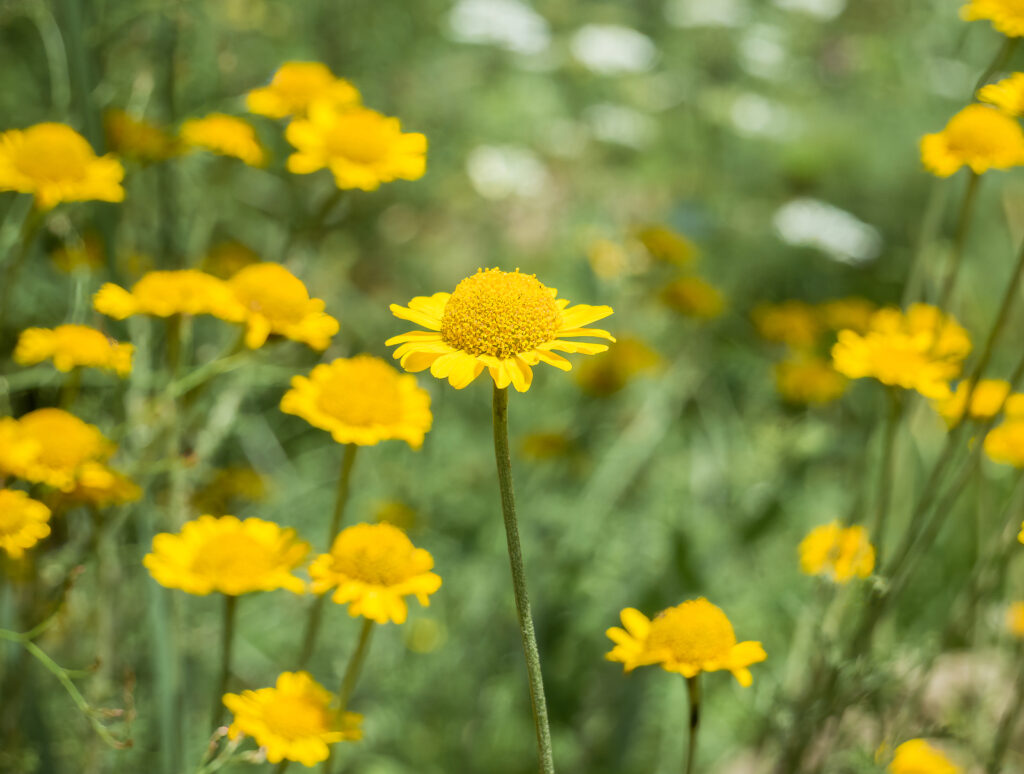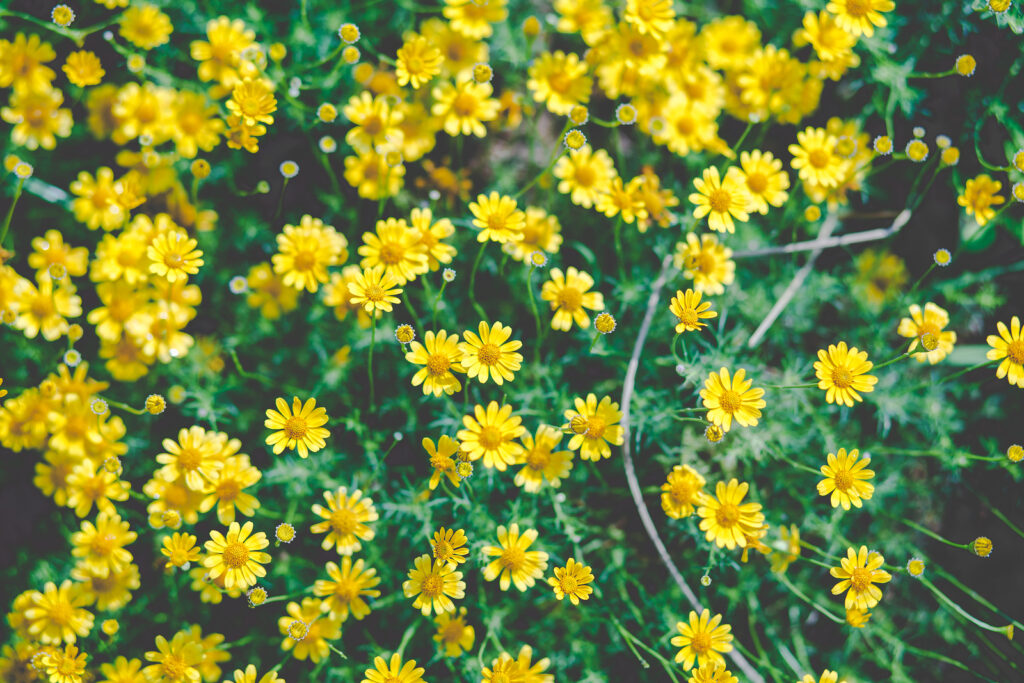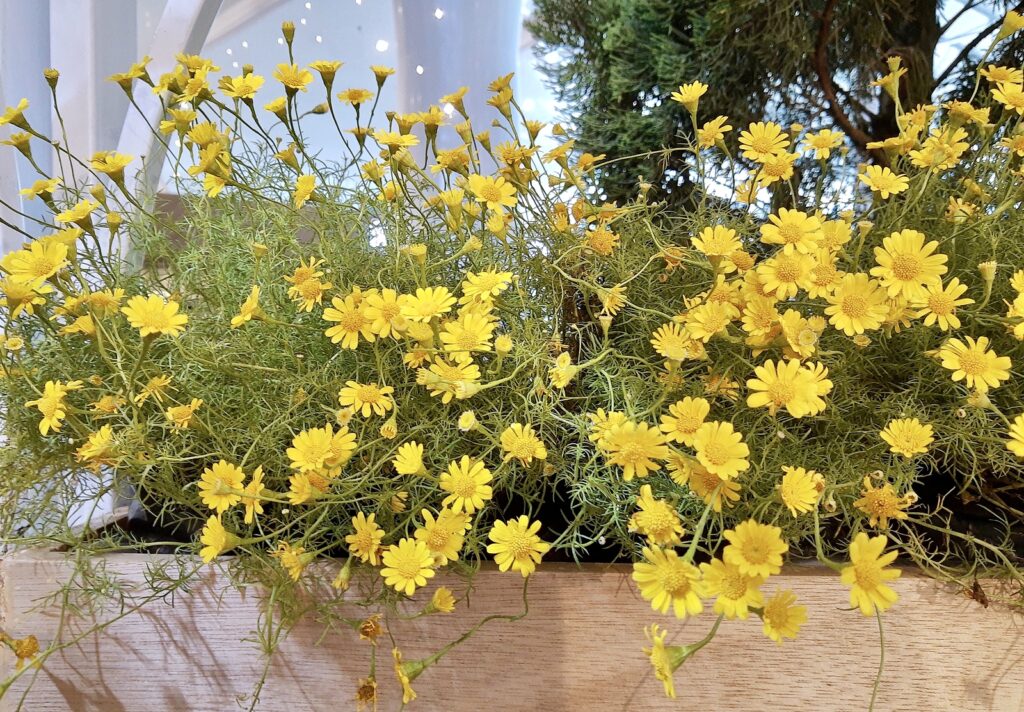Thymophylla–commonly called Dahlberg daisy–is a branching annual with fern-like pungent leaves. From spring to summer, it produces small upturned, star-shaped, bright yellow flowerheads.
Thymophylla is a good choice for summer bedding. It is also good in containers and hanging baskets.
Thymophylla is a genus of 10 to 12 species of erect to spreading, bushy, strongly aromatic annuals, biennials, and perennials. Thymophyllla tenuiloba is the most commonly grown in gardens.
Good Products for Growing Flowers:
- Espoma Garden Tone 3-4-4 Fertilizer
- Epsom Salt Plus Plant Nutrients Magriculture
- Neem Bliss 100-% Cold Pressed Neem Oil
- Safer Brand Insect Killing Soap
- Monterey BT Caterpillar Killer
Thymophylla is a genus of about 10 species of spread, aromatic annuals, biennials, and perennials native dry slopes and prairies in the United States, Mexico, and Central America. The Thymophylla genus is synonymous with the genus Dyssodia.

Get to know Thymophylla
- Plant type: Annual
- Growing Zones and range:
- Hardiness: Tender
- Height and width: 4 to 8 inches (10-20cm) tall; 6 to 12 inches (15-30cm) wide
- Foliage: Finely divided fernlike foliage; alternate or opposite leaves are entire or pinnatisect.
- Flowers: Tiny bright yellow daisies
- Bloom time: Summer
- Uses: Edging, bedding, hanging baskets, desert, and rock gardens
- Common name: Dahlberg daisy, golden fleece
- Botanical name: Thymophylla tenuiloba
- Family: Asteraceae
- Origin: Dry slopes and prairies in the United States, Mexico, and Central America.
Where to plant Thymophylla
- Plant Thymophylla in full sun.
- Grow Thymophylla in average to poor, well-drained soil.
Thymophylla uses
- Thymophylla is a good choice for edging a border.
- Grow Thymophylla in a rock garden.
- Thymophylla’s sprawling habit makes it a good choice for hanging baskets.

When to plant Thymophylla
- Set Thymophylla in the garden in spring after all danger of frost has passed.
Planting and spacing Thymophylla
- Space Thymophylla 6 to 12 inches (15-30cm) apart.
- Sow seed 1/8 inch deep in evenly prepared soil.
How to water and feed Thymophylla
- Dahlberg daisy needs moderate water; keep the soil evenly moist. Mature plants are drought-tolerant.
- Dahlberg daisy does not need fertilizer.
Thymophylla care
- Mulch around Dahlberg daisy to conserve soil moisture.
- Dahlberg daisies may overwinter in warm climates.
- Dahlberg daisies hit by frost or freezing weather can be discarded.
- Plants may liver over in mild-winter climates, but they become straggly as they get older.
Thymophylla pests and diseases
- Pests and diseases do not commonly attack Thymophylla..

Thymophylla propagation
- Sow seed in mid-spring and plant out after the last frost.
- Sow seed in the garden from mid to late spring.
- Seeds germinate uncovered in 10 to 16 days at 65° to 70°F (18°-21°C). It can take 4 months 4 months to flower.
Thymophylla varieties to grow
- Thymophylla tennuiloba, Dahlberg daisy, is a branching annual with almost fern-like leaves; bears upturned, star-shaped bright yellow flowers to .5 inches across.
Thymophylla frequently asked questions
Q: What growing condition does Dahlberg daisy prefer?
A: Grow Dahlberg daisies in full sun and average garden soil. Keep the soil just moist. Fertilize sparingly. Dahlberg daisy will tolerate heat and drought, but it prefers cooler climates.
Q: What is the best way to propagate Dahlberg daisy?
A: Sow seeds indoors 6 to 8 weeks before the last expected frost. Move seedlings outdoors when the danger of frost is past.
Related Articles:
- 20 Perennials That Bloom for 6 to 8 Weeks
- Shrubs with Showy Flowers Season-by-Season
- Trees in Garden Design
- Growing Annuals for Summer Bloom
- Trees—click here for more articles
- Shrubs—click here for more articles
- Perennials—click here to see more
- Annuals—click here to see more















